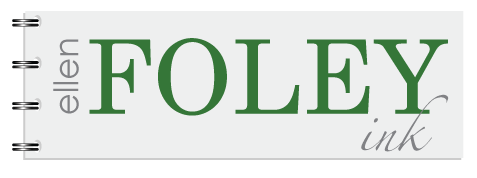Ellen’s Note: Updated Sept. 5 with news of Journal Register bankruptcy.
Two steps to digital-first journalism
Last week, I had the good fortune to visit with a small news operation in a college town that also is a retirement haven. (Out of respect, I won’t mention which one.) Friends there asked me to assess how the company could move to the digital future without leaving behind a core audience of more traditional readers.
My past three years experimenting with media during the Madison College referendum and storytelling through marketing helped me immediately see the path to digital first. Many of my marketing clients concerned with reputation management and crisis communications are using digital storytelling exclusively. Many of my journalist pals are still hoping for a print future. My visit holds lessons for both sides of the notebook, particularly those of us concerned about strategic change.
No one is confused that the future of journalism involves the smart phone and digital devices, such as the IPad, websites and social media. However, the printed Sunday or Saturday paper, which carries the glossy ad inserts, still makes a good profit for many publishers. The advertising and readership that has migrated to the web still can’t support a news operation on its own. We are in a difficult transition.
Interregnum
One of my favorite authors put it this way, “The crisis consists precisely in the fact that the old is dying and the new cannot be born; in this interregnum a great variety of morbid symptoms appear.” A certain morbidity, for sure. Antonio Gramsci ‘s words from 1930s reverberate today. The revolutionary thinker challenged Mussolini’s repressive regime, and the author was put in prison for 10 years where he died. Thank God, American journalists don’t face imprisonment for finding a new path. Yet, we all wonder what are the right answers in this time of culture change? The questions come at a moment when we need to hold on to the old and not get in the way of the birth of the new, particularly at smaller operations.
Many of us have been surprised by the rapid movement away from print in markets, including New Orleans and Detroit. Almost every week a news organization, sometimes renamed a news center, announces it will reduce the frequency of the print paper.
Journal Register, formerly the publisher of more than 20 daily and 150 weekly newspapers, recently morphed into Digital First Media. It describes itself now as producing 350 multi-platform products that reach an audience of 21 million Americans each month and as the local news source for 992 communities in 10 states.
My pal Jim Brady, formerly of the Washington Post, is editor-in-chief of Digital First Media, and with his boss, John Paton, they have captured the journalism community’s attention with their tough talk and innovative research.
(THIS JUST IN: Journal Register announced today that it would file bankruptcy and sell to another investment group. You can read the release here. Paton referenced print revenues in the release and the reasons are a bit unclear. How the news group will be organized after the sale is also unclear. However, Journal Register and Paton’s inspirational efforts still resonate.)
Paton recently gave a speech called “Old Dogs New Tricks and Crappy Newspaper Executives.”
We could have applied that adjective to a Journal Register paper near Philadelphia, when I worked at the Daily News and Inquirer company from 1998 to 2004. The Daily News employed several Trentonian émigrés who talked about how they had to bring their own chairs to work and how they struggled to do great journalism with few office supplies.
Crowd and Cloud
Working for Journal Register in the 1990s was a default. Now The Journal Register and its partner, MediaNews, under the Digital First banner trumpet a new journalism era with “crowd and cloud” keystones. One colleague recently told me he continues to work there despite other opportunities because of the inspirational leadership.
Note that the company’s name is Digital First, not Digital Only. Paton offers some nuances that intrigue me. With the changes from print first to digital first often comes a reduction in staff. Some see the change as an excuse for cost-cutting. Cutting staff may be a necessity but even the new kid on the block, Digital First, has been careful to increase resources for investigative journalism and its new ambitious project aimed at building a national presence, ominously called Thunderdome.
What are possible next steps for digital first journalism at newspapers without wealthy investors and national ambitions?
Here’s my prescription after my visit last week to the small newspaper loved by its community but headed for the digital future.
Ellen’s Two-Step Plan to Journalism with a Future
Step 1: Find or promote a newsroom leader with journalistic prowess who is fearless. Look for these traits.
- · Leadership. Will traditional journalists follow this person?
- · Entrepreneurial excellence inside and possibly outside the newsroom, particularly with establishing a personal brand through blogs, email, web, Facebook, LinkedIn, Twitter and print.
- · A record as a change agent.
- · A national journalism reputation.
- · History as a community-focused business leader.
- · Nimbleness and flexibility.
Step 2: Action plan for small city print to digital futures
- Share the company’s strategic plan with the newsroom along with an outline of possible action steps that journalists can help shape. Transparency can be terrifying for privately owned or very small corporately owned enterprises, but it’s essential if you want the operation to change. And change is not an option. It’s just what kind of change and how fast.
- The first action step would be quantitative research, particularly around the issue of reducing the frequency of the print newspaper, and an emailed engagement survey with community leaders and readers/users. The engagement survey not only invites the community and customers to help envision the future, it also helps the newsroom get better acquainted with readers/users habits and needs. Many papers are reducing frequency. The right balance in your market may not be the balance started in another market.
- Create a long-term or annual action plan for the newsroom to include:
- Enhanced live tweeting and live blogging for college events and governmental meetings of importance. This coverage is important to key audiences.
- Enhanced community engagement through digital and in-person channels to include: email check-in stations, positioned the way University of Wisconsin-Madison has located its standup computer stations at its new Union South in which the computer users face each other so conversation can bloom; blogging stations in the newsroom or at a community location for staff and community; LinkedIn trainings for the business community in the news conference rooms; and other events that invite the community into the news rooms, much like Digital First has done.
- One out-of-the box idea is a possible social space, such as a cyber soda fountain, digital cafe/smoothie station or coffee area that fills the large open spaces vacated during reductions in staff. Community supporters, who might be tapped for community-generated content, could be enticed to frequent the shop if the news operation offered photo opps with historical photos or icons such a portrait of Bucky Badger or a CowParade winning fiberglass statue. (Other cities offer other civic statues ranging from peanuts to birds.) This social space could also host a gallery of cyber wonders from local techies, such as the virtual reality offerings developed at the colleges and nearby technical schools.
- Assess whether journalists need a new blogging platform with SEO power, more robust Facebook pages with coupons, contests and specialized tabs, improved email communications with readers, a digital-first civic journalism project in which the company leads an effort to solve an issue or at least start the conversation. If mobile apps are not in place, work fast to get there. If the newsroom isn’t producing video, buy some training from a local photographer and distribute flipcams, a tip from Paton. In the meantime, ask the newsroom to improve content strategies for all platforms, including mobile and video.
- Provide training to buff newsroom skills so they can accomplish the above.
- Write a master narrative for all newsrooms to guide coverage and underscore a core brand with a shared project across all community news centers.
- Organize the newsrooms to lead the way for digital first strategy. Replace any open positions with a Digital First Tactical Leader. Replace dark reporting positions with digital first journalists.
- Partner with the area colleges with possible website synergy on political or community projects, such as madisoncommons.org in Madison, Wis.
- Propose (and possibly fund) a community-generated content boot camp that is sustainable. Use area retired journalists and resources at area colleges to organize and teach the boot camp. Select the first class strategically.
- Audit shared content with area websites and affiliates and assess where efficiencies can be made and content can be repurposed.
- Research a database project, such as a regional water quality audit, that generates a map or crowdsourcing effort to create maps that drill down to the home address and allow readers/users to take action about an issue they care about.
- Create a vision for the young journalists, which gives them hope a career in journalism is sustainable to prevent rapid turnover during transition.
In Year Two, the action plan could expand these initiatives and establish consistent and complete transition to digital-first journalism should the readership and usership indicate support.
©Foley Media Group 2012

